Updated 04/05/23. Using a vitamin C serum is one of the best ways to fade discoloration and slow down the progression of visible signs like lines and wrinkles. However, regularly using a vitamin C serum can be tricky when you also exfoliate and/or use retinol. That’s because the regular use of retinol, retinoids, and exfoliating acids can weaken the skin barrier, causing sensitivity. Add vitamin C into the mix and your skin can become dry and irritated. (That’s why you must be careful when it comes to these ingredients. The last thing you want is for a product to work against you, causing issues rather than solving them.)
The good news is that you can, in fact, use a vitamin C serum alongside retinol and acids without causing irritation. You just have to know what to look for in a vitamin C product. Ahead, see the five most important qualities of a good vitamin C serum.
5 Things to Look For in a Vitamin C Serum
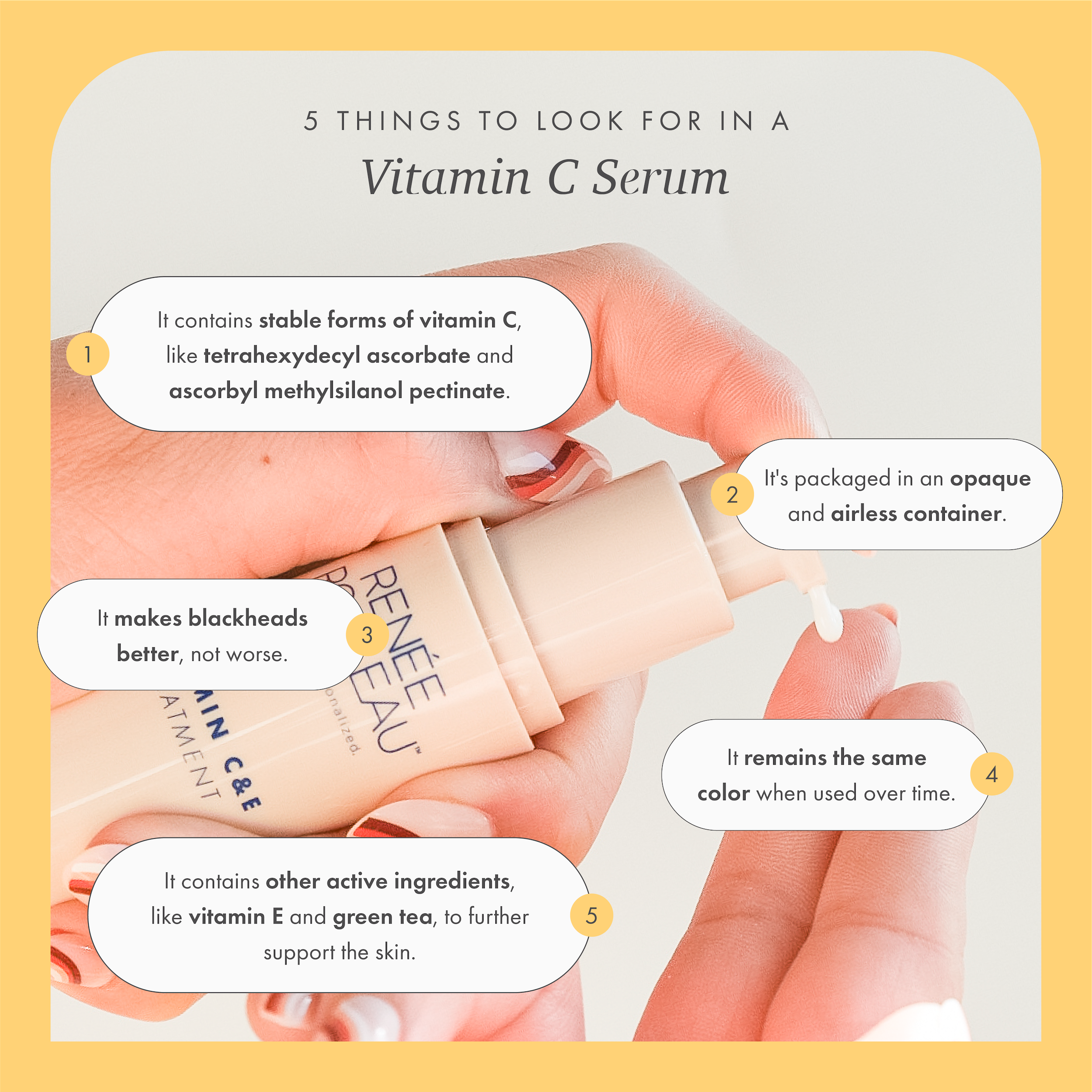
1. It Contains Stable Forms of Vitamin C
If you’re applying vitamin C every day, and you’re experiencing dryness (which is also known as a damaged moisture barrier), don’t think it’s just because you use retinol, retinoids, or exfoliating acids. It might actually be due to the vitamin C serum, itself.
Many vitamin C serums contain pure ascorbic acid. This is considered an unstable form of vitamin C. It also has a high irritation potential since it’s an acid with a low pH. Translation? It can lead to skin sensitivity. A vitamin C serum shouldn’t contribute to redness, dryness, or inflammation, so it’s best to avoid serums in which the bulk of the vitamin C comes from ascorbic or L-ascorbic acid.
It’s better to choose a serum that contains other forms of vitamin C that are known for being more stable and less acidic on the skin. I always recommend certain vitamin C derivatives, since they’re effective without being irritating. Examples include tetrahexyldecyl ascorbate, ascorbyl methylsilanol pectinate, ascorbyl palmitate, and sodium ascorbyl phosphate.
These non-acidic forms do a better job of maintaining stability and performance. That’s why I chose to formulate the Vitamin C&E Treatment with a combination of tetrahexyldecyl ascorbate and ascorbyl methylsilanol pectinate. Both of these are highly stable, highly effective, and less irritating. Together, they can brighten the skin, target discoloration, and provide powerful antioxidant benefits.
2. It’s Packaged in an Opaque and Airless Container
No matter what form of vitamin C you’re working with, you want to protect it from air and light. That’s because air and light are vitamin C’s worst enemies—they cause it to oxidize and become ineffective. Packaging a vitamin C serum in a bottle that allows air and light to make contact with the formula is a big mistake, and cosmetic formulators know it.
When choosing a vitamin C serum, avoid those in which you can see the formula through the container (this means light is able to penetrate the packaging). Also, be sure to avoid those that use a dropper bottle or dip tube pump to dispense the product (this means that air can easily enter). Look for what is known as airless packaging. This is the type that industry experts recommend.
Note: for this type of packaging, you can’t see when the product is getting low, which makes it difficult to know when you need to repurchase it. Luckily, there’s an easy solution. Simply unscrew the pump and dip a cotton swab inside to measure how much product is left. Don’t worry about a little air getting in. Once you close it up and go to pump it again, any air will pump right out. That’s the magic of airless packaging!
3. It Makes Blackheads Better—Not Worse
Ascorbic and L-ascorbic acids are notorious for oxidizing quickly, and they can actually make blackheads more noticeable. Here’s how it works. Blackheads form when oil hardens and becomes stuck in enlarged pores. The oil at the surface oxidizes and turns to a dark gray color (not technically black). If you use an unstable vitamin C serum, it can oxidize too, only contributing to the problem and making the blackheads look darker and more noticeable. No one wants that!
As a hands-on esthetician with over 30 years of experience, you can trust me when I say I’ve seen a huge improvement in my clients’ blackheads when they switch to a stable, non-oxidizing vitamin C serum, like the Vitamin C&E Treatment.
4. It Remains the Same Color When Used Over Time
When a vitamin C serum turns a copper-brown color, it’s a sign that it was formulated with an unstable form of vitamin C (such as the aforementioned ascorbic or L-ascorbic acids) and it has oxidized. This means it’s no longer effective and it’s certainly not providing your skin with all the benefits it should be.
Manufacturers of such formulas can’t disagree. These companies will attempt to slow this process down by packing their formulas in amber-colored bottles. However, it can’t be prevented entirely, and they know this. As a result, some companies even get a little sneaky by changing the formula from clear to brown with synthetic dye. The hope is that the drastic change in color will be less noticeable to the consumer.
You might be asking yourself, Why do companies still use these types of vitamin C? I believe that many companies have an “if it’s not broke, don’t fix it” mentality. Sure, when it comes from a freshly opened bottle, these types of vitamin C will definitely do the job. However, as time goes on, they’re sure to lose efficacy. Not only that, but they’re sure to cause irritation, too, especially for people who have compromised skin barriers or use retinoids and exfoliating acids.
5. It Contains Other Active Ingredients to Further Protect the Skin
Vitamin C serums are meant to be used during the day, underneath sunscreen, to protect the skin from damaging free radicals.
The three types of free radicals are reactive oxygen species, reactive carbonyl species, and reactive nitrogen species. Collectively, they can cause harm to our cells, making them age faster. To prevent this, you want to use a formula containing vitamin C partnered with various free-radical-fighting antioxidants, like vitamin E and green tea extract. These work synergistically with vitamin C to fight free radicals more efficiently.
The Bottom Line
To summarize, it’s important to choose a formula that offers long-lasting activity in the skin with maximum stability. A product that relies exclusively on ascorbic acid or L-ascorbic acid will not deliver the full benefits of vitamin C if the formula can’t hold up. What’s worse is that it can actually cause unnecessary irritation to anyone who has a compromised barrier.
If you’re using the right formula, vitamin C can be used safely and effectively alongside other active ingredients like retinoids and exfoliating acids. Follow these rules when choosing a vitamin C product, and you’ll be well on your way to reaping the maximum anti-aging and brightening benefits of this ingredient!
Next, here’s proof that applying a vitamin C serum to your skin really works!
Celebrity Esthetician & Skincare Expert
As an esthetician trained in cosmetic chemistry, Renée Rouleau has spent 35 years researching skin, educating her audience, and building an award-winning line of products. Her hands-on experience as an esthetician and trusted skin care expert has created a real-world solution — products that are formulated for nine different types of skin so your face will get exactly what it needs to look and feel its best. Trusted by celebrities, editors, bloggers, and skincare obsessives around the globe, her vast real-world knowledge and constant research are why Marie Claire calls her “the most passionate skin practitioner we know.”
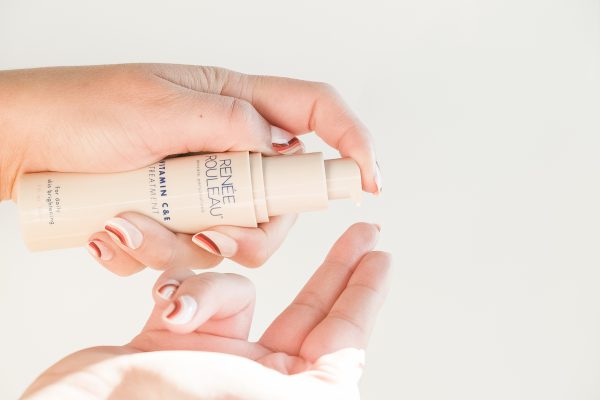
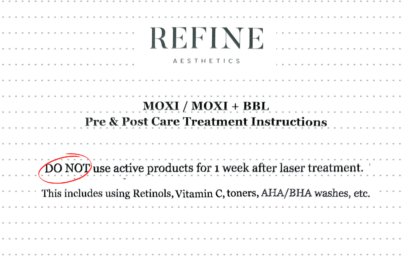
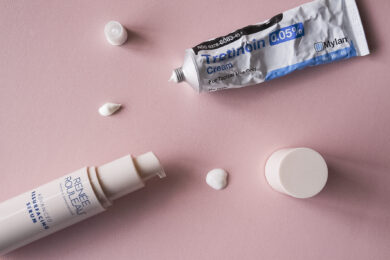
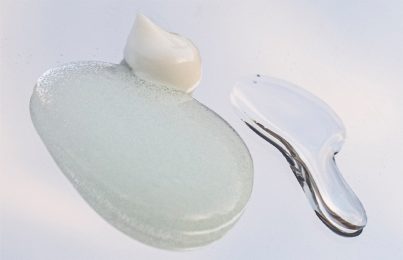
Comments:
Thank you for educating us. I will save it and share it with friends. Great blog!
Posted By: Salon SuitesPB |